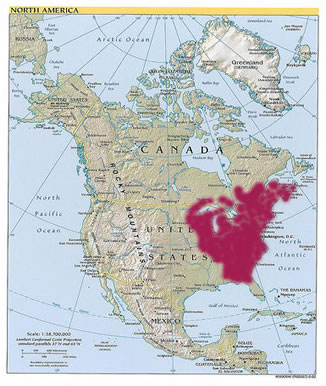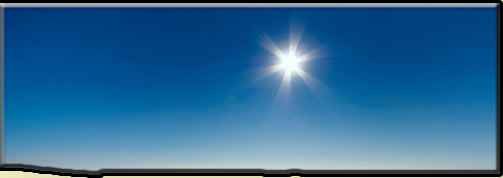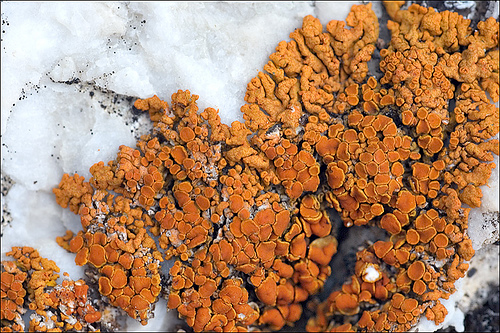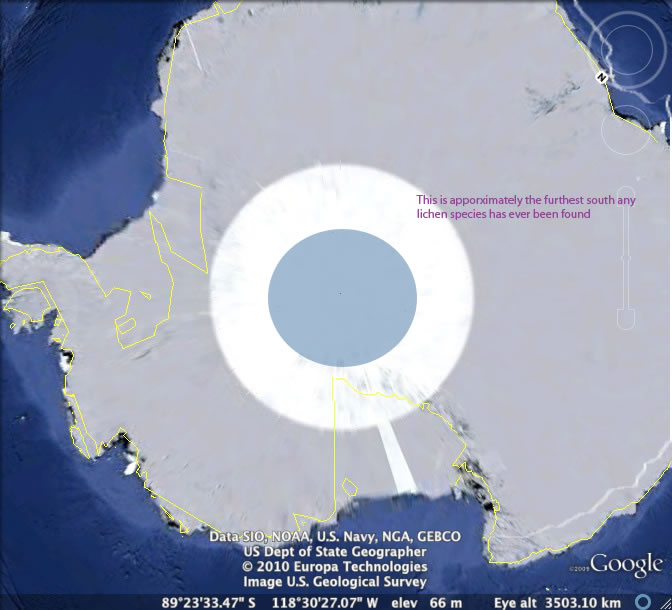Habitat
Lichens are one of the most resilient organisms known today. Their presence spans regions from the tropics to the arctic tundra of northern Alaska, Canada, and Siberia. In alpine environments where other organisms struggle to survive due to inhospitable conditions, lichens have gained the ability to thrive.
The species below, known as Xanthoria elegans, is actually an inhabitant of Antarctica. The picture below shows some of this species growing on a bluff along the coast. This lichen has been collected as far south as 86o30’!
Note, the edges of the blue circle. Lichens have been found living in regions this far south. To put this into perspective, Vostok research station, which sets at around 78o south recorded the lowest temperature EVER in the world of -128.6oF! Summers around that region are not much better, with warm summer days topping off around -22oF. The survival of this group of lichens hinges on their ability to produce certain chemicals and modify cellular components to shield against the environment. In fact, the European Space agency released a report in February of 2010 stating that Xanthoria elegans survived 18 months on the side of the international space station exposed to the vacuum of space. Nothing else has ever been known to survive such harsh conditions. Not only is there no atmosphere, but the solar radiation, wide temperature fluctuations, and high velocity of the station still permitted the lichen to survive. The ability to withstand lack of water and radiation alone is astonishing. This recent finding may support the theory of panspermia, a theory that states life can travel between planets and even solar systems via traveling space debris.
The link to the European space agency finding can be found here.
What about C. cristatella?
Now to get back on topic and talk about the British Soldier Lichen. This particular species is not nearly as robust as Xanthoria elegans, but a relation does exist.
Though the USDA web site only lists Cladonia cristatella as being found in Massachusetts, this species can be found throughout the northeastern quadrant of the United States and Canada. In fact, many amateur lichenologists report subspecies of this organism being found as far south as Florida and as far west as Minnesota and Missouri. In addition to presence in the United States, parts of southern Quebec and Ontario also are home to this species. 
This map is a rough approximation as to the region where these lichens can be found. Conflicting reports as to the range of this species exist, but from reported sightings this seems to be a rough estimate as to the range.
Usually this particular species is found near decaying organic material. Most commonly, the lichen can be found near fallen or dead trees in forested areas. This species is important in that it helps recycle nutrients back into the soil for reuse by other plants. In addition to being an important recycler of nutrients, this species serves many other very important roles.



